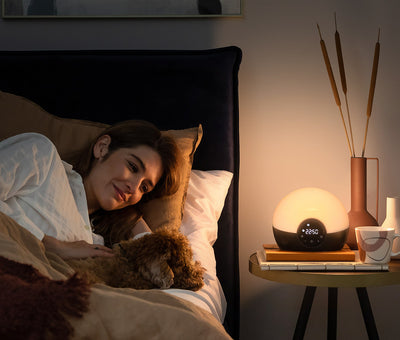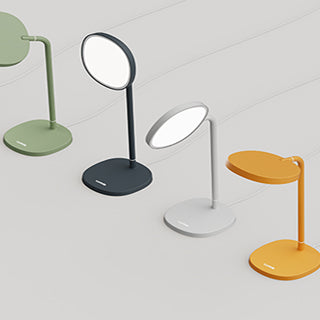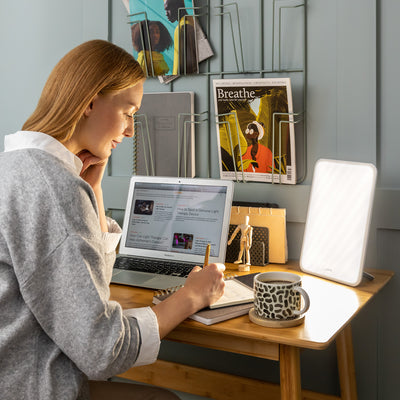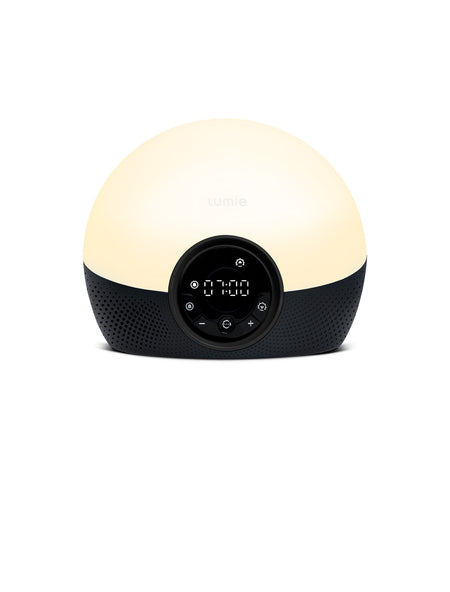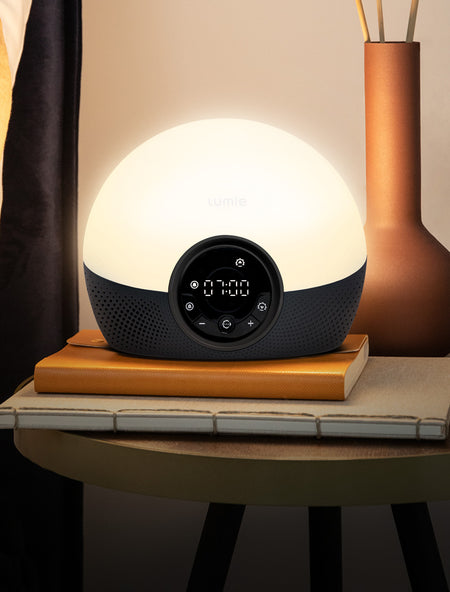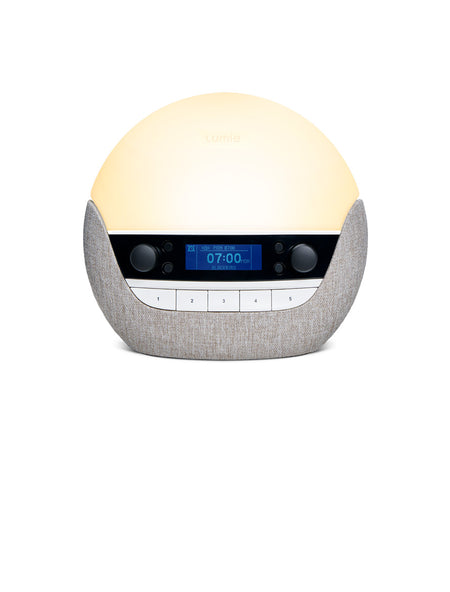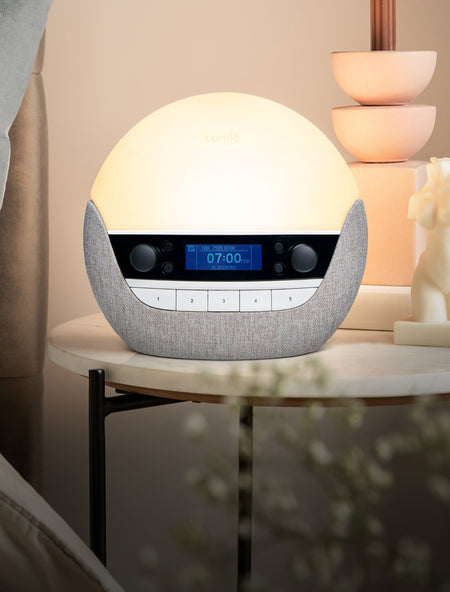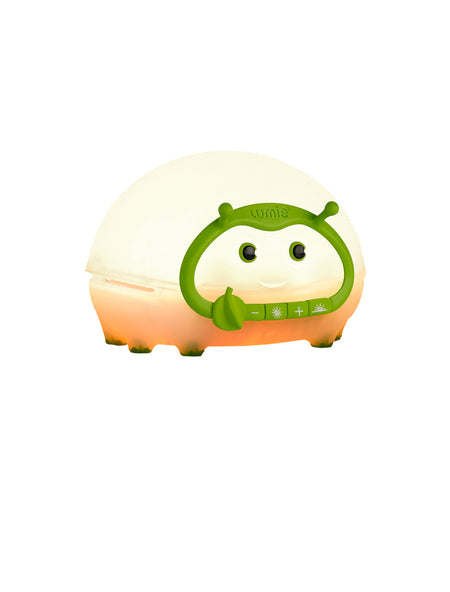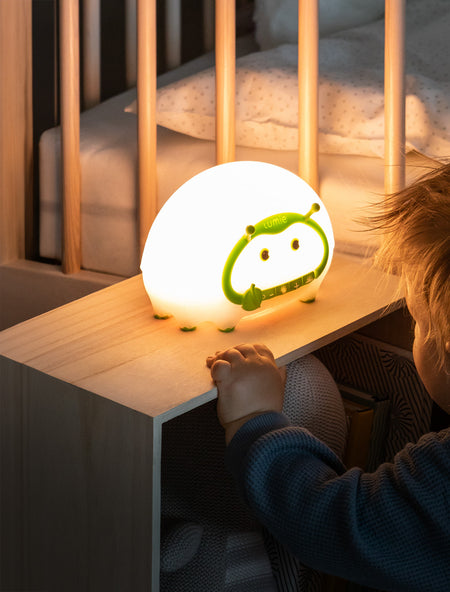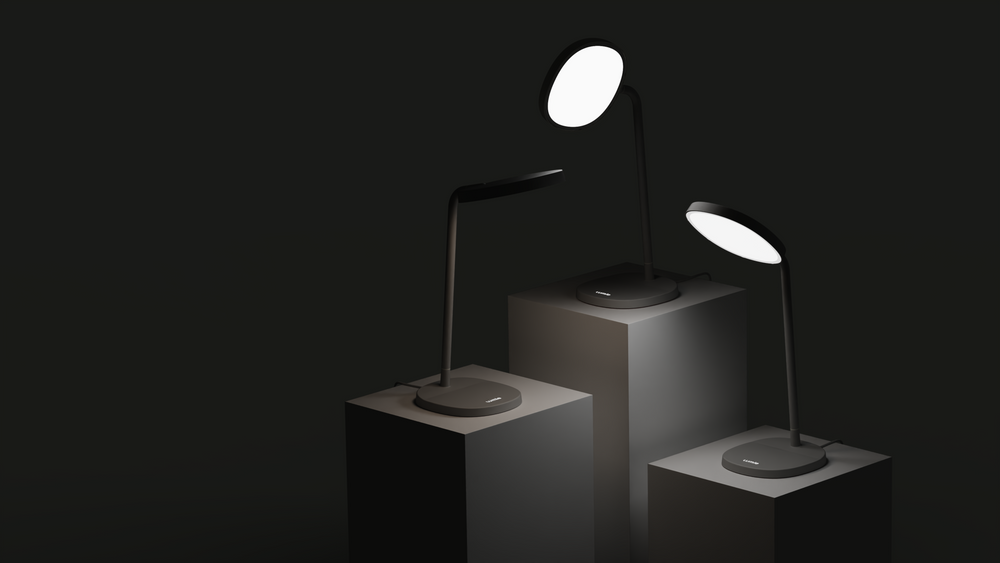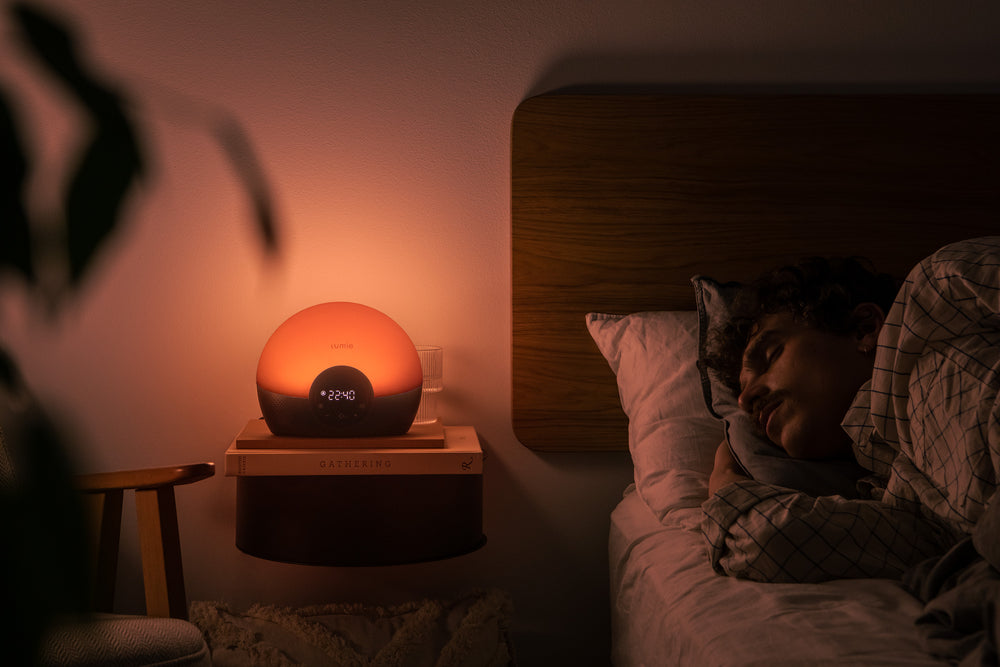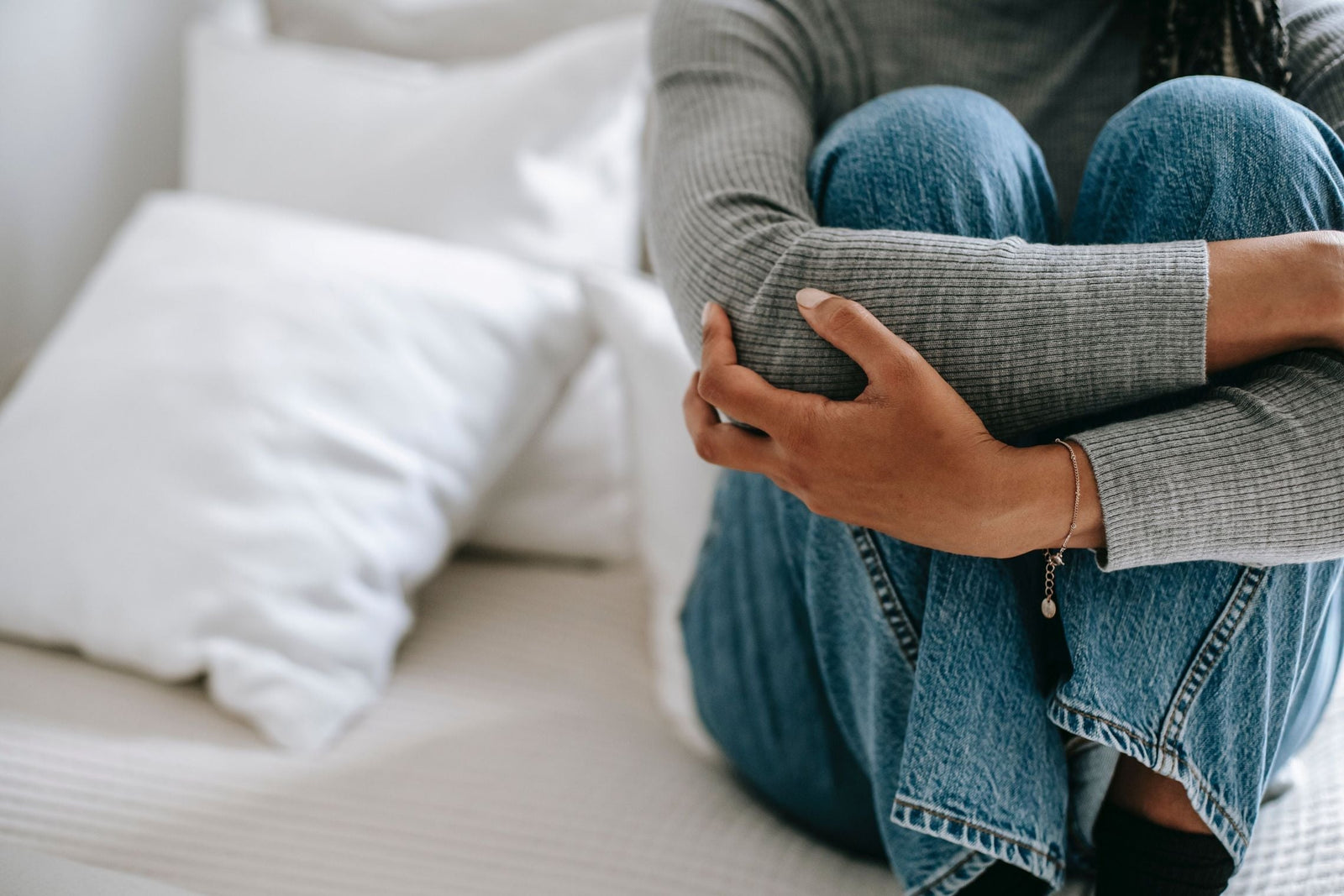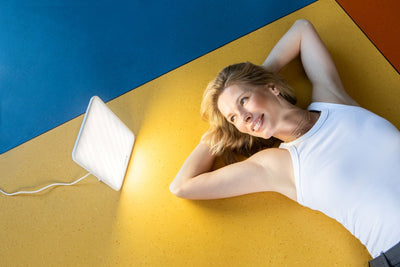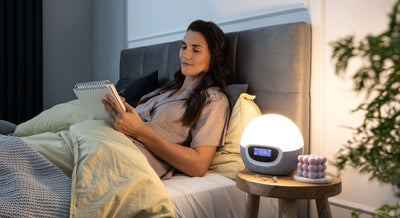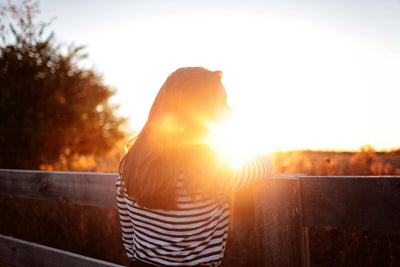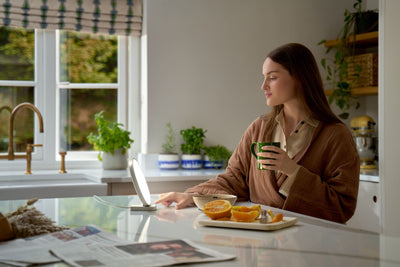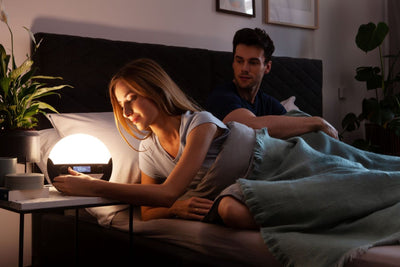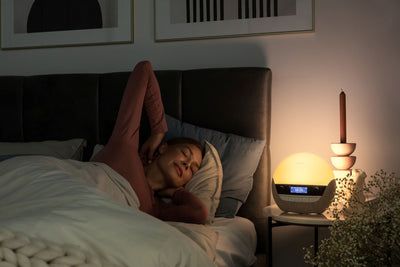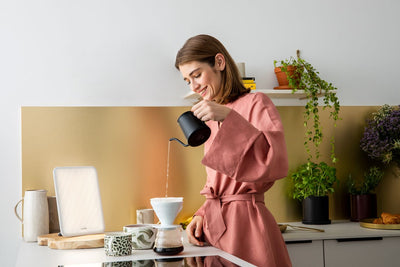Navigating menopause-related sleep and mood challenges with light therapy
As shorter, darker days approach, managing sleep challenges and mood shifts during menopause becomes tougher. This World Menopause Day, we explore how light therapy can help provide relief.
What is menopause?
Menopause is a natural biological process that affects individuals with menstrual cycles, typically occurring between the ages of 45 and 55, although it can happen earlier. This transition involves hormonal changes that lead to the end of periods. While menopause is a natural part of aging, the accompanying symptoms can be challenging and disruptive in daily life. Many individuals find relief from these symptoms through lifestyle adjustments, hormone therapy, or other medical interventions. In this article, we'll briefly discuss the most common menopausal symptoms, with a focus on sleep and mood, and explore how light therapy can provide relief.
What are the most common symptoms of menopause?
Although not all individuals will experience all of the below (and the severity and duration of symptoms can vary widely), the most common symptoms of menopause are:
- Mental health symptoms:
- Low mood
- Anxiety
- Mood swings
- Difficulty with concentration/memory
- Physical symptoms:
- Headaches/migraines
- Muscle ache/joint pain
- Difficulty sleeping
- Hot flushes
- Changes to body shape
- Dry/itchy skin
Why is light important and how can light therapy help manage menopausal sleep challenges?
Morning light exposure is crucial for optimising both sleep and mood. During autumn and winter, when natural light is limited, light therapy devices step in as a valuable alternative. Lamps such as Lumie Vitamin L and the recently launched Lumie Task closely mimic natural daylight, emitting 10,000 lux to bring the benefits of sunlight indoors and to reset the body's circadian rhythms.
In harmony with bright light therapy, wake-up lights are highly effective at improving the quality of sleep and awakening. Bodyclock’s gradual sunrise simulation gently prepares the body to wake up naturally by simulating the increasing levels of morning light. This signal prompts the brain to suppress melatonin (’the sleep hormone’) and activate the 'get up and go' hormones. As a result, upon waking up, you feel more alert and ready to embrace the day. The opposite is true at bedtime. As natural light fades, it acts as a cue for the body to increase melatonin production. Lumie Bodyclock simulates this effect with its sunset feature, helping you wind down naturally and feel ready for a restful sleep.
How can light therapy help alleviate menopause-related mental health symptoms?
Mental health symptoms associated with menopause can become more pronounced during the darker autumn and winter seasons. Bright light therapy and sunrise/sunset simulation offer nonpharmacological alternatives to traditional treatments. Exposure to bright light triggers the release of serotonin, a neurotransmitter associated with regulating mood, emotions, sleep, appetite, and cognition. Simultaneously, bright light helps suppress melatonin production, providing a natural energy boost, and enhancing daytime alertness and focus. By elevating mood and mitigating depressive symptoms, light therapy presents menopausal individuals with a natural, holistic, and effective solution to enhance their mental well-being.
What’s the most effective light therapy protocol for individuals experiencing menopause?
Our general light therapy protocol provides a starting point, but it's crucial to acknowledge that individual responses can vary significantly. Customising recommendations to suit specific needs and symptoms may involve a trial-and-error process to discover the optimal protocol. When purchasing directly from lumie.com, our lights include a 45-day trial and a 3-year warranty, allowing for plenty of time to experiment with your regimen.
Here are our general guidelines on how to get started:
Morning exposure: Exposure to bright light in the morning is key. After waking up gently with dawn simulation, aim for a bright light therapy session of 20-30 minutes. This helps reset circadian rhythms and enhance sleep and alertness.
Consistency: Regular and consistent use of light therapy is crucial, as it doesn’t otherwise offer a lasting effect. Try to incorporate it into your daily routine, especially during the autumn and winter months when natural light is limited.
Duration and positioning: The duration of each session will vary depending on the specific light therapy lamp being used but, typically, a daily session of 20-30 minutes with a light therapy device at eye level and at a distance that allows for comfortable exposure without looking directly into the light is best.
In the hours closer to bedtime: Blue light, which is common in most indoor lighting and electronic screens, can interfere with your body’s natural sleep response. As you approach bedtime, it's essential to use warm, dim, and non-alerting light sources (such as dimmed Lumie Halo in Evening Mode or Lumie Bodyclock). Additionally, when it’s time to nod off, Lumie Bodyclock’s sunset feature aids relaxation, preparing your body for restful sleep.
While light therapy is generally very safe, it's advisable to consult with a healthcare professional before beginning a regimen if you have underlying health conditions or are taking medications.
References
Parry BL, Meliska C, Sorenson D, et al. Sleep and light therapy for peri-menopausal depression. Presented at: 2018 North American Menopause Society Annual Meeting; October 3-6, 2018; San Diego, California. Abstract S-19
Lieverse R, Van Someren EJ, Nielen MM, Uitdehaag BM, Smit JH, Hoogendijk WJ. Bright light treatment in elderly patients with nonseasonal major depressive disorder: a randomized placebo-controlled trial. Arch Gen Psychiatry. 2011
McEnany GW, Lee KA. Effects of light therapy on sleep, mood, and temperature in women with nonseasonal major depression. Issues Ment Health Nurs. 2005
Find further sleep research papers here
Find further research papers on the topic of light therapy and SAD here
